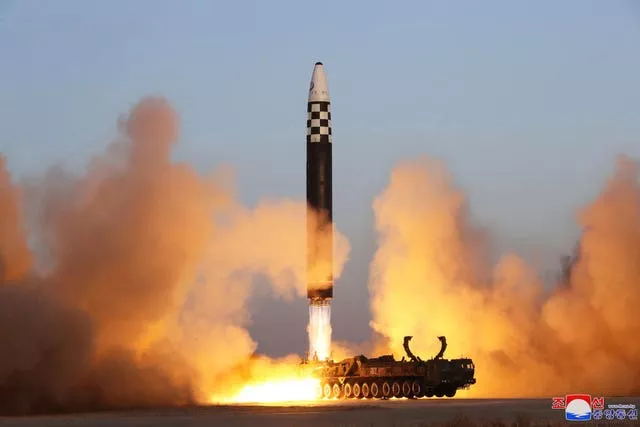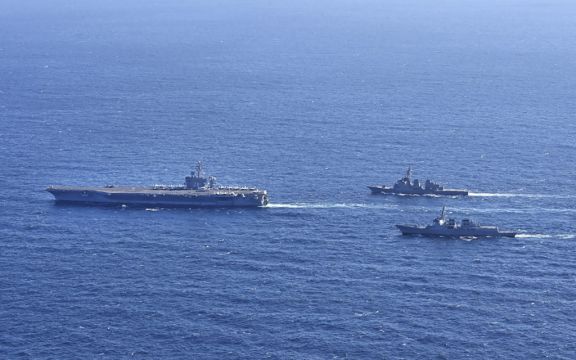The United States, South Korea and Japan have conducted combined naval exercises involving an American aircraft carrier in their latest show of strength against nuclear-armed North Korea.
The manoeuvres came as the three countries’ senior diplomats were to meet in Seoul to discuss the deepening stand-off with Pyongyang, the South Korean military said.
The training in waters off South Korea’s Jeju island came as North Korean leader Kim Jong Un continued weapons testing and issued threats that have raised regional tensions to their highest point in years.
At Pyongyang’s rubber-stamp parliament this week, Mr Kim declared that North Korea would abandon its long-standing commitment to a peaceful unification with South Korea and ordered a rewriting of North’s constitution to eliminate the idea of a shared statehood between the war-divided countries.
His speech on Monday came a day after the North conducted its first ballistic test of 2024, which state media described as a new solid-fuel intermediate range missile tipped with a hypersonic warhead, reflecting its push to advance its line-up of weapons targeting US military bases in Guam and Japan.

South Korea’s Joint Chiefs of Staff said the trilateral naval drills, which completed its three-day programme on Wednesday, involved nine warships from the countries, including US aircraft carrier Carl Vinson and Aegis destroyers from South Korea and Japan.
The exercise was aimed at sharpening the countries’ combined deterrence and response capabilities against North Korean nuclear, missile and underwater threats, and also training for preventing illicit maritime transports of weapons of mass destruction, the Joint Chiefs of Staff said.
It did not specify whether the training reflected concerns about North Korea’s alleged arms transfers to Russia to help that country’s war in Ukraine.
In Seoul, South Korean nuclear envoy Kim Gunn was scheduled to meet with Japanese counterpart Namazu Hiroyuki on Wednesday, a day before their trilateral meeting with US President Joe Biden’s deputy special representative for North Korea, Jung Pak, to coordinate their response toward the North.
In the face of growing North Korean nuclear threats, the conservative government of South Korean President Yoon Suk Yeol has been expanding military cooperation and training with the United States and Japan, which Mr Kim has decried as invasion rehearsals.
Mr Yoon has also sought stronger reassurances from Washington that it would swiftly and decisively use its nuclear capabilities to defend its ally in the event of a North Korean nuclear attack.
In his speech at the North Korea’s Supreme People’s Assembly, Mr Kim called described the South Koreans as “top class stooges” of America who were obsessed with confrontation, and repeated a threat that the North would annihilate the South with its nuclear weapons if provoked.







